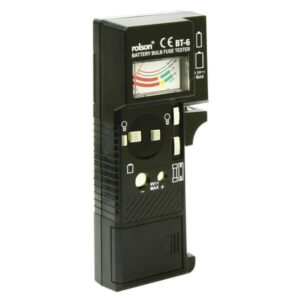Choosing the Best Battery for Your Caravan
When it comes to caravanning, having a reliable power source is essential for running appliances, lights, and other electrical devices while off-grid. Choosing the right battery for your caravan can make a significant difference in performance, longevity, and convenience. This guide will help you understand the different types of caravan batteries and how to select the best one for your needs.
Types of Caravan Batteries
1. Lead-Acid Batteries
Lead-acid batteries are the most traditional and affordable option. They come in two main types:
- Flooded (Wet) Lead-Acid Batteries – These require regular maintenance, including topping up with distilled water. They are cheaper but less efficient and have a shorter lifespan.
- Sealed Lead-Acid (SLA) Batteries – Maintenance-free and spill-proof, these include AGM (Absorbent Glass Mat) and Gel batteries. AGM batteries are more durable and handle deep discharges better than flooded batteries, making them a popular choice for caravans.
2. Lithium-Ion Batteries
Lithium-ion (LiFePO4) batteries are becoming increasingly popular due to their superior performance:
- Lighter weight (about half the weight of lead-acid batteries)
- Longer lifespan (up to 10 years or more)
- Faster charging
- Higher usable capacity (can be discharged up to 80-90% without damage)
While they are more expensive upfront, their efficiency and durability often make them a cost-effective choice in the long run.
Key Factors to Consider When Choosing a Caravan Battery
1. Battery Capacity (Ah – Amp Hours)
This indicates how much energy the battery can store. A higher Ah rating means longer power availability. Calculate your daily power consumption (e.g., fridge, lights, charging devices) to determine the required capacity.
2. Depth of Discharge (DoD)
Lead-acid batteries should not be discharged below 50% regularly, whereas lithium batteries can handle 80-90% discharge without damage. This means a 100Ah lithium battery provides more usable power than a 100Ah lead-acid battery.
3. Charging Efficiency
Lithium batteries charge faster and more efficiently than lead-acid batteries, especially when using solar panels or a DC-DC charger.
4. Weight and Size
If weight is a concern (especially for smaller caravans), lithium batteries are the best choice due to their lightweight design.
5. Budget
- Lead-acid (AGM/Gel): Affordable but shorter lifespan.
- Lithium-ion: Higher initial cost but better long-term value.
Best Battery Choice for Different Caravanning Needs
- Weekend Campers: AGM batteries offer a good balance of cost and performance.
- Full-Time Travellers: Lithium batteries provide the best efficiency and lifespan.
- Solar-Powered Setups: Lithium batteries pair well with solar due to their fast charging and deep discharge capabilities.
Maintenance Tips
- Lead-acid batteries (especially flooded types) need regular water top-ups and should be kept fully charged when not in use.
- Lithium batteries require minimal maintenance but should be stored at a partial charge (around 50-60%) if unused for long periods.
Final Thoughts
The best caravan battery depends on your budget, power needs, and travel style. If you want a long-term, high-performance solution, lithium-ion is the best choice. For budget-conscious campers, a high-quality AGM battery is a reliable alternative.
By selecting the right battery, you can ensure a steady power supply for all your caravan adventures!
Would you like recommendations on specific brands or charging systems? Let me know how I can help further!




